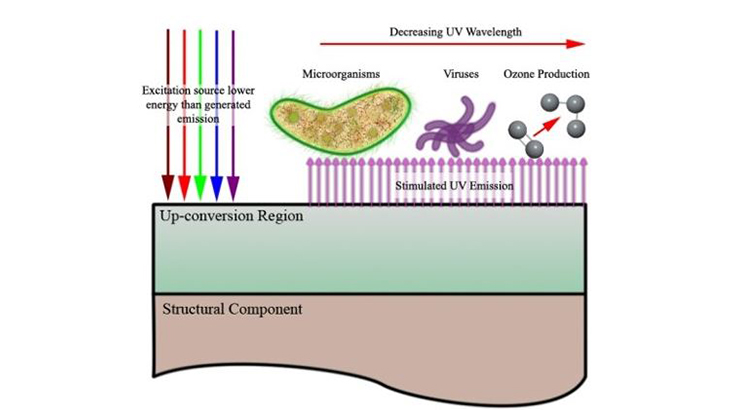Up-Converting Luminescent Coatings for Antimicrobial Applications
ID# 2009-0857
Technology Summary
Luminescent materials exist in a wide array of compounds, such as natural oxides, doped ceramic crystals, polymers, and some plants and animals. Stimulation of these compounds can be accomplished by many energy sources from thermal excitation and electromagnetic waves to chemical reactions and high energy particle impacts. In developing this technology, the primary material up-conversion candidates selected were Rare Earth (RE) doped phosphors due to the increased number of potential vibrational and rotational energy bands available which results in significant up-conversion processes. Combining UV emitting particles into surfaces and paint systems may provide new markets for antimicrobial applications.
Application & Market Utility
Since UV radiation exposure has been shown to effectively kill many types of bacteria and microorganisms in only a few minutes, these up-converting composite coating systems are useful for continuously sterilizing surfaces. Surfaces that produce UV light (up-conversion) from lower energy sources (IR, VIS) can continuously bombard microorganisms on the surface, near surface or subsurface (if coating surface integrity is compromised) with UV radiation to inhibit growth and ultimately kill the microorganisms. The UV emitting coatings overcome the limitations of current UV anti-microbial coatings, since these coatings are tailored to use safe IR or visible light as a stimulation source resulting in constant sterilization of the illuminated surface.
Next Steps
Protected by U.S. Patent 9,284,487. The research team is seeking licensing and research collaboration opportunities.

